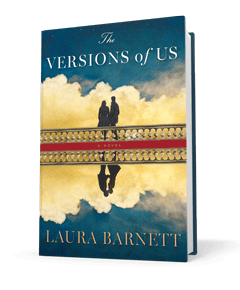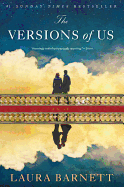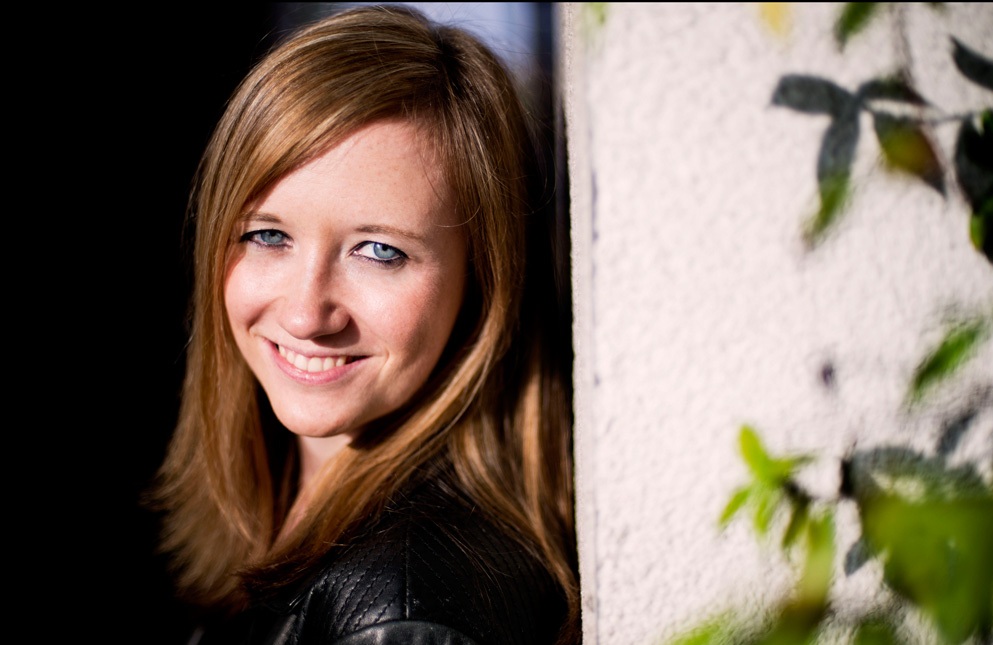The Versions of Us
by Laura Barnett
With a few notable exceptions, such as the film Sliding Doors or Kate Atkinson's Life After Life, multiverse theory usually crops up only in the plots of comic books and speculative fiction. In this dexterously executed first novel, Laura Barnett imagines the story of two lives and one love from cradle to grave in three different ways, suggesting that no matter what choices we make, certain people will always find a way to each other.
Jim and Eva meet by chance as Cambridge students in 1958, when a rusty nail punctures Eva's bicycle tire and Jim offers to fix her flat. They fall madly in love, "[a]nd then they walk away together, out of the allotted grooves of their afternoons and into the thickening shadows of evening, into the dim, liminal place where one path is taken, and another missed."
In a second timeline, Eva bicycles past Jim and misses the nail, so they never meet. Eva marries her boyfriend David, a self-absorbed actor, unaware for years that Jim even exists.
The third possibility shows Eva hitting the nail, puncturing her tire, and taking a fall. As in version one, Jim stops to help and the two quickly connect. Eva breaks up with David and starts a relationship with Jim, but soon realizes she's carrying David's child. Unwilling to let Jim put off his future to raise another man's child, Eva breaks off their relationship and marries David without giving Jim a chance to offer to call the baby his own and raise it with her.
Barnett follows Jim, Eva, their families and friends through a lifetime of choices in each version, and the courses of their lives quickly take different directions despite common threads echoing through each. In every version, Jim longs for a career as an artist, driven by "the need to capture a moment, whether real or imagined, before it disappears," while Eva's destiny lies in writing. Jim always struggles with his mother's failing mental health, and David's narcissism always leaves Eva wondering if he ever truly loved her.
Although focused on relationships, Barnett never stops at the sweet side of romance, instead stepping into the tough territories that can come with any marriage: infidelity, career envy, absenteeism. In version one, Eva finds success with her writing, her star rising steadily, while Jim's art career refuses to get off the ground. Their marriage struggles under the weight of his jealousy and resentment as Eva becomes the primary breadwinner while he teaches art, his insecurities deepening as David, Eva's ex, goes on to become a celebrity actor. In version two, Eva spends years standing in David's shadow, taking time to find herself and someone without whom life is like "[a]n open road ribboning endlessly across flat desert lands." Jim lives in a commune and has a child with another artist but works on a portrait of the captivating married woman he met at a party--Eva. In version three, Jim meets many of the same people who play an important role in his art career in version two, but he remains haunted by his brief relationship with Eva, who comes to regret her decision to leave him.
The versions alternate in five- to 10-page chapters, unfolding as a comparison of the three different lives. Initially beginning with a prologue about Jim's and Eva's parents and births before splitting into the three alternate realities and always ending with a version of the cast "looking out to where the shadows are gathering, and the night coming on," the greater work gives the sense of a universe beginning as a small creation, expanding constantly outward, then gradually drawing back in on itself as the characters age and begin "to know happiness for what it is: brief and fleeting, not a state to strive for, to seek to live in, but to catch when it comes, and to hold on to for as long as you can."
Sensitive Jim usually suffers for his art, and even when he allows his petulance to damage his marriage, his sharp longing to realize his dreams creates a natural sympathy toward him, even when his pride leads him into unnecessary torment. Secondary characters provide drama, like Jim's volatile lover Helena, or comic relief, like self-involved David, whose charisma and deep-seated unconcern for others' feelings make him a joy to dislike. Eva, however, is the uncontested star, continually winning the reader over with her grace, grit and intelligence, and if Jim occasionally accuses her of overshadowing him, readers will realize he is always lucky to find her. Their enduring pull toward each other will move anyone who has had that moment of recognition when meeting a total stranger, but Barnett never tries to make a grandiose statement about fate. Instead, in each storyline, we simply see that the greatest parts of life lie in the journey and the connections we make along the way, the people who help us create the best versions of ourselves. Barnett's ability to turn normal lives into a sprawling, triumphant epic will leave readers excited to see what this brilliant newcomer does next. --Jaclyn Fulwood








